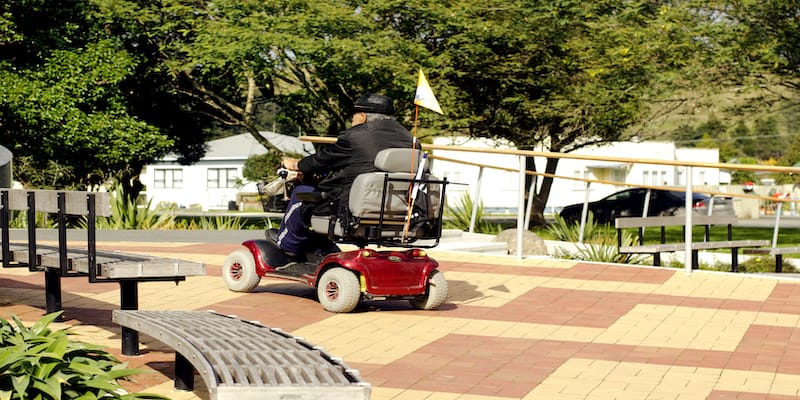About 6.8 million Americans use mobility devices ranging from wheelchairs, walkers, canes, or something similar.
Many people rely on these devices to move around and perform their daily tasks. If you are one of these people, you will understand how essential a mobility device is for day-to-day life, and you will appreciate how important it is to stay on top of your device’s proper maintenance.
To do this, you will need to be able to recognize signs that your mobility device might need to be serviced before it’s too late.
Here is a simple guide that covers how to recognize problems, so you don’t end up in a pickle.
Risks of Waiting Too Long to Service Your Mobility Device
First and foremost, there are certain risks involved if you wait too long before servicing or fixing a wheelchair. You’ll want to bring your mobility device in for service at the first signs of a problem.
Putting off wheelchair maintenance could lead to significant problems such as a loss of independence while the mobility device is out of commission, or a large financial investment to fix a serious issue with the wheelchair.
If you wait too long to service your wheelchair, you could find yourself immobile at an inopportune time. You could wind up in a dangerous place when your chair stops working, or you might find yourself stuck at home, causing an interruption to your commitments for the day.
From a financial perspective, the longer you wait for maintenance, the worse the problem will become. Problems in their beginning phases are typically easier and less expensive to remedy. As the problem worsens, the financial investment increases as well.
Knowing when your mobility device might need to be serviced is critical when it comes to your personal and financial well-being.
Knowing When Your Mobility Device Might Need to Be Serviced
There are a few tell-tale signs of a wheelchair in need of service. We are going to go through a few of these signs so you can catch them before they become serious issues. It’s better to be safe than sorry, and it’s better to be early than late when it comes to maintaining your independence.
Air-Filled Wheels
The wheels are an essential part of your wheelchair because they are what get you from place to place easily. If they start to lose air, it will become difficult to move around, and the extra effort required will cause stress on the arms and shoulders. Air loss can also cause problems with the structural integrity of the chair as it can start to wear out the wheel.
If your chair has air-filled (also known as pneumatic) tires, it is easy to identify when they start losing air. Press your thumb into the tire. If the pressure of your finger presses the tire inward about 5 mm, you will need to add air to the tire.
You should check air pressure every week to catch air loss early. When temperatures are cooler in the winter, which causes the air to contract, you should check tire pressure more often.
If the tire loses pressure as soon as you fill it up, there is probably a hole, requiring a patch or possibly an entirely new tire.
Cushion
The cushion of your wheelchair is extremely important when it comes to your comfort. Keep an eye on it for wear and tear.
If you have an air-filled cushion, make sure to check the air pressure regularly for ultimate comfort. If you have a foam cushion, inspect it from time to time to make sure it remains intact.
Though an old cushion might seem insignificant, it isn’t. It is a critical aspect of mobility because it can affect the way your body feels overall. A sore rear end or back can make it difficult to move around.
Batteries
As you know, if your battery runs out of juice, you won’t be able to go anywhere. Therefore, it is important to stay on top of battery maintenance.
If you have a gel-cell battery, it won’t require much maintenance, but it is important to remember that the charge should be drained before it is plugged in for a recharge. If it is not completely empty before charging, it can damage the battery.
If you have a wet-cell battery, you will need to check electrolyte levels periodically. Sometimes distilled water needs to be added to the battery to maintain its function. Remember that when adding distilled water, the battery should not be completely discharged.
Drive Controls
Drive controls are the brain of your wheelchair, so their maintenance is extremely important in terms of your movement.
If you notice that when you move the joystick, for example, the chair does not react right away, it is a sign that your wheelchair needs help. Likewise, if the chair doesn’t move at its normal speed or doesn’t have its normal pickup, you’ll need to take it in for maintenance.
Seek Maintenance Before It’s Too Late
You know your wheelchair best, so if you notice that something seems off, it is best to seek help right away. Service for wheelchairs is a worthwhile investment.
This will save you the headache of getting stuck at home and the risk of ending up in an unsafe situation. Nipping the problem in the bud before it has a chance to worsen will also be easier on your wallet.
If you think your mobility device might need to be serviced, don’t hesitate to contact us. We will help identify the problem and solve it before it’s too late.

